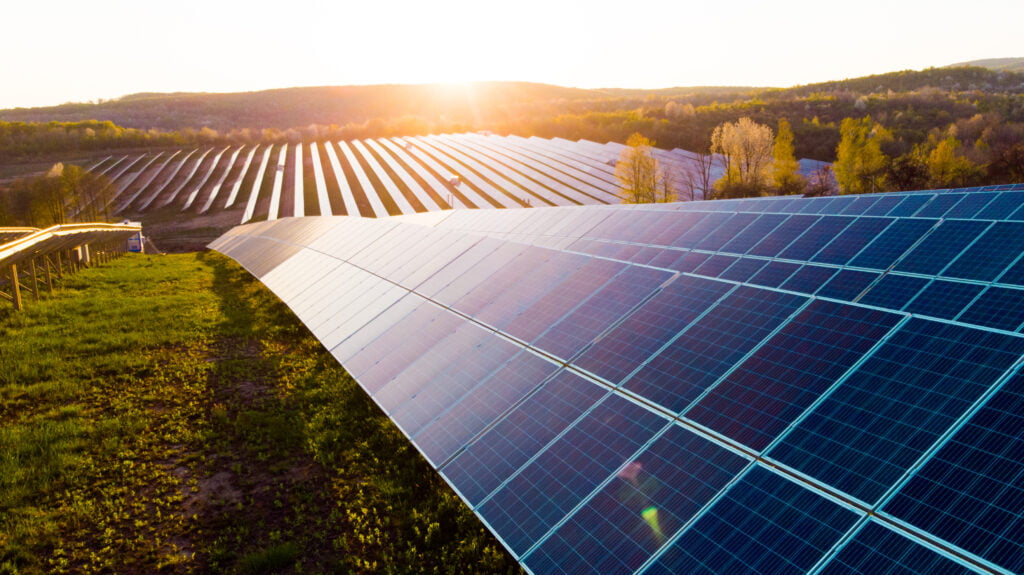 Topography significantly affects how wind interacts with solar photovoltaic (PV) structures. While flat terrain installations have their own sets of challenges and best practices, installations in topographically “interesting” terrain introduce unique difficulties. Let’s delve into two primary factors affected by topography: wind speed-up and loss of shelter, and how they influence wind loads on solar PV structures. For our purposes, “significant topography” generally refers to terrain with a grade between 5% and 20%. Installing on steeper terrain is possible, and some of the following will apply.
Topography significantly affects how wind interacts with solar photovoltaic (PV) structures. While flat terrain installations have their own sets of challenges and best practices, installations in topographically “interesting” terrain introduce unique difficulties. Let’s delve into two primary factors affected by topography: wind speed-up and loss of shelter, and how they influence wind loads on solar PV structures. For our purposes, “significant topography” generally refers to terrain with a grade between 5% and 20%. Installing on steeper terrain is possible, and some of the following will apply.
Wind Speed-Up
The phenomenon of wind speed-up occurs when the wind accelerates over a hill, escarpment, or ridgeline. It’s common to assume this effect is conservatively accounted for in building codes and loading standards like ASCE 7. However, these standards can have issues that make them inadequate for some sites.
Computational Fluid Dynamics (CFD) can be employed to understand wind speed-up at a specific site more accurately. CFD simulations can utilize topographic data provided by the client to measure wind speed at each post location across the array. CFD offers a far more efficient and accurate means of determining wind speeds over a complex site compared to conventional standards like ASCE 7 that necessarily require conservatism in application due to their generalized procedures.
Loss of Shelter
While wind speed-up is a commonly understood concern, the loss of shelter within an array is less discussed but equally critical. Most solar PV racking structures are tested for wind loads in boundary-layer wind tunnels, and these studies typically assume flat terrain and quantify reduced loads due to sheltering in the interior of the array. However, undulating terrain can result in a loss of shelter within the array, increasing wind loads unpredictably.
Wind tunnel tests can quantify loads on generic terrain like 2-D ridges. Some solar plants may feature simple terrain like this, and wind tunnel results could be easily applied. However, many solar plants in sloped terrain feature much more undulation, which leads to a complex application of generic wind tunnel results. It can be tempting to paint with a conservative brush in cases like this, but it leads to higher material costs.
Tailored Solutions at CPP Wind
At CPP Wind, we offer site-specific services that analyze each post for its potential for wind speed-up and loss of shelter. Using client-provided topography data and pile driving plans, we simulate and analyze the wind flow over the site terrain. From this, we can highlight posts that fall into zones where applying a loss-of-shelter factor from the wind tunnel study is appropriate and identify all posts that don’t require special treatment. This analysis allows design engineers to provide increased strength where it’s needed and save materials where it’s not.
Understanding the effect of topography on wind loads is crucial for solar PV installations. From wind speed-up to loss of shelter, different topographic conditions present unique challenges that demand site-specific solutions. By employing advanced methods like CFD and detailed wind tunnel studies, we can help our clients better prepare for these challenges and ensure the structural integrity of solar PV structures.
Contact us today to ensure topography is accounted for in your solar installation safely, efficiently, and reliably.
We provide consulting in several languages, including English, Chinese, Spanish, French, and German.
